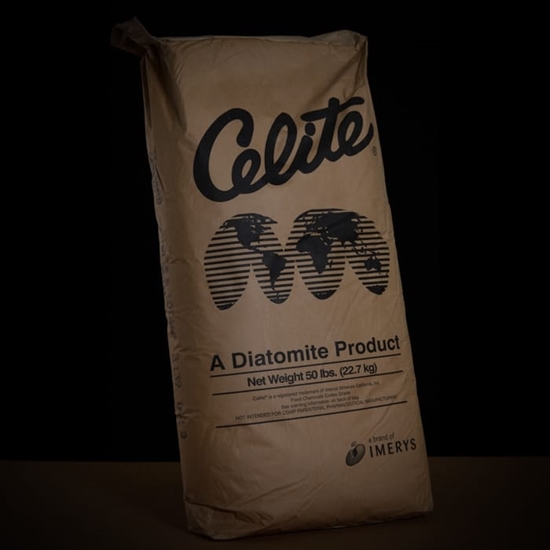Celite® 512 Z – 50 lb

SKU: BZZZ1464
Permeability: 0.5 darcies
Median pore size: 5.0 μ
BSI, (ASBC): ≤ 20.0 ppm
Celite Corporation is the only supplier of high purity and high performance filter aids to the brewing industry. Celite is also the largest global supplier of diatomite and perlite filter aids.
Celite’s high purity DE technology was implemented a decade ago at their Lompoc CA site (the only marine diatomite mine in the world) for the pharmaceutical industry. This technology is now available to the brewing industry in a wide selection of diatomaceous earth filter aids, called ‘Celite Z grades’.
These Z grades have substantially reduced levels of Beer Soluble Iron, (BSI), in comparison to those standard grades. BSI has a negative effect on beer flavor stability, colloidal stability and gushing is well documented in the literature. However, of paramount importance to the brewer is flavor stability. Huige, states that beer flavor instability is caused by the formation of volatile, long chain unsaturated carbonyls with low flavor thresholds and unpleasant flavors. One of various methods discussed by Huige to minimize the oxidation reaction is by minimizing copper and iron pickup.
(See literature cited note).
Schmidt & Kluba commented that ferrous ions may be imparted to the beer by certain processing aids such as diatomaceous earth or filter pads.(See literature sited note)
This is where the Z grade pre-coat & body-feed filter aids from the Celite Corporation truly stand alone with BSI levels as low as 20 ppm. These low BSI levels are maintained while still offering similar flow throughput characteristics offered by the high iron counterparts. Dosage rates will be equal to the standard CELITE grades on a grade to grade basis.
Literature Cited
Huige, N.J. Beer and Wine Production, Analysis, Characterization and Technological Advances, ACS Symposium, Series 536, 1993, pp. 64-97.
Schmidt, T.R.; Kluba, R.M. The Practical Brewer, Beer Quality and Taste Methodology 3rd Edition, 1999, pp. 380-412